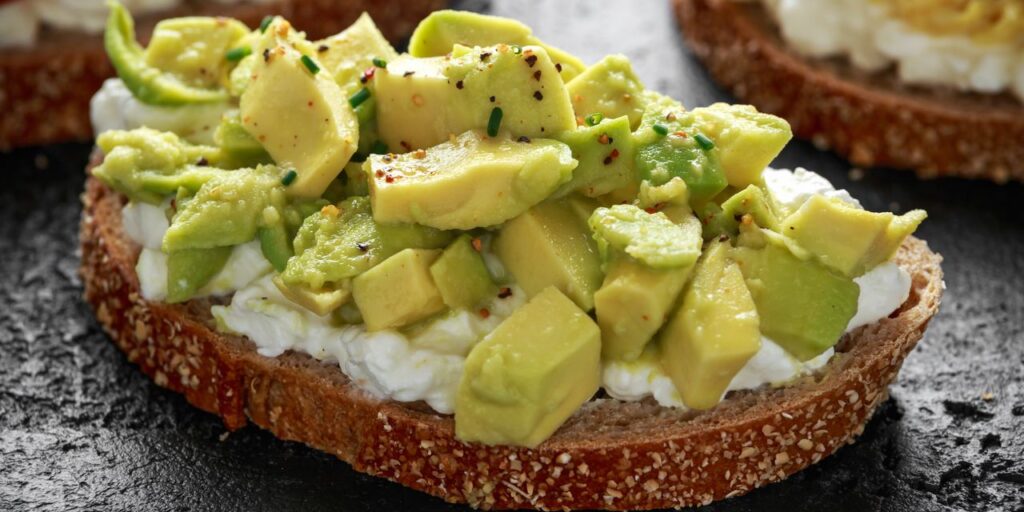If you’re aiming to ramp up your protein intake (welcome to the club), protein bars and shakes might come to mind first—these products are indeed turbocharged with the muscle-building macro. But you actually may not need to load up on such supplemental forms to get enough of it, nor is downing a whole bunch in a few gulps or bites necessarily the best approach to getting your recommended 50 to 80ish grams per day.
Spacing out your protein intake is going to be the better choice, Nicole Addison, RD, of Nourished by Nic, tells SELF. There are a couple reasons for this: For one, protein breaks down slower than some other nutrients, so eating it throughout the day (snacks, included) will make sure you aren’t leaving the table hungry. Going this route also encourages more stable blood sugar, which contributes greatly to sustaining energy levels all day long.
But it’s not always so simple to dial up your protein consumption at each meal (lookin’ at you, breakfast). So we’ve compiled a list of expert tips for fitting in just a little bit more of it.
1. Use some creative tricks to beef up your oatmeal.
Eating enough protein at breakfast is especially important because it sets your body up for good blood sugar regulation throughout the day, Rhyan Geiger, RDN, a Phoenix-based registered dietitian and founder of Phoenix Vegan Dietitian, tells SELF. But lots of morning staples fall short on the nutrient, oatmeal included. Fortunately, it’s easy to boost the protein in a bowl of oats, because the grain’s neutral flavor makes it amenable to all kinds of ingredients.
You could whisk in an egg white or two while cooking to give it a fluffy texture and a few extra grams of protein. Or you could simply cook it with milk instead of water; if you use a cup of it, that’s eight extra grams right there. Even incorporating a can of beans into the breakfast classic won’t greatly alter the classic taste you know and love but will make sure it satisfies you until lunch. Both white beans and chickpeas have neutral flavors that meld well with oats, and mashing them up beforehand will make their texture almost unnoticeable.
2. Take avocado toast to the next level.
Yes, it’s quick and easy to make, but if you eat it alone, it’s not big on the protein, Geiger says. That’s why, when she’s mashing everything up, she likes to add other protein-rich ingredients to guarantee her needs are met. Some of her favorites include edamame, white beans, and green peas, all of which are shelf-stable or freezer-friendly and can easily boost avocado toast’s protein count by at least a few grams.
To add some tang, you can also throw a scoop of cottage cheese in with the avocado, Addison says. If you add just half a cup, that’s 11 more grams of protein.
3. Add a dollop of yogurt to your scrambled eggs.
Eggs on their own have a decent amount of protein—roughly six grams in each—but you might not quite get the satisfaction you need from only eating one or two, Cara Harbstreet, MS, RD of Street Smart Nutrition, tells SELF. A quick fix for scrambled eggs? Add a few spoonfuls of yogurt while you whisk for one or two more grams of protein. That might not seem like a lot, but making multiple of these kinds of additions can really tally up by the end of the day. Bonus: The extra ingredient will also make the curds fluffier and more flavorful.
4. Keep protein-rich seeds on hand.
Seeds are such a practical way to eat more protein: They’re small and easy to store, shelf-stable, and don’t add a huge burst of flavor, so you can put them on pretty much anything, Addison says. Not to mention, they’re also rich in fiber and healthy fats, two other nutrients that contribute to satiety. In particular, she’s a big fan of hemp seeds because they contain a little more than three grams of protein per tablespoon, and they’ll give an irresistible crunch to anything from breakfast cereal to pasta. Pumpkin, chia, and sunflower seeds all also deliver the goods and taste great on tons of things like soups and salads.
5. Put an egg on it.
And by “it,” we mean pretty much anything. Throwing a quick fried or hard-boiled egg—again, that’s six grams of protein—on top of a salad, soup, rice bowl, or pasta dish, for example, will tip the scale with little extra effort, Harbstreet says. You can buy the premade hard-boiled ones in the store, meal-prep a whole batch so you can grab and go, or fry up your own in just a couple minutes.
6. Try a different drink.
One of the easiest ways to add more protein to your diet is to rethink what you drink, Harbstreet says. Of course there’s nothing wrong with water, but swapping H2O for a cup of a dairy-based beverage like milk or kefir, or even a fortified nut milk, will give you between eight and nine extra grams of the stuff in one fell swoop.
7. Choose the highest-protein option for your milk (or alt milk) needs.
Speaking of milk, it’s worth considering the type you’re using in your cereal, coffee, smoothies, and beyond—as all aren’t created equal on the protein front. If you’re a dairy consumer, switching to an ultrafiltered milk can seriously up your intake: It has 13 to 18 grams per cup, compared to typical milk’s eight grams. (Not to mention, it’s been stripped of lactose, so is typically a great choice for the lactose-free folks.)


